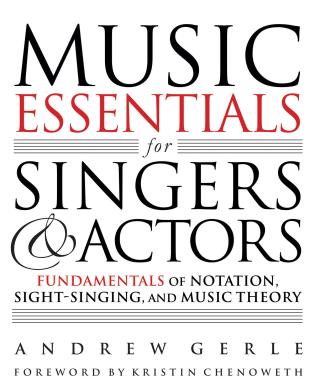
Online courses called "Moocs" (Massive Open Online Courses) that are open to the public are free and open to all. These courses are taught by respected professors who are experts in their fields. The courses are designed to be interactive, and encourage large-scale participation. MOOCs are often modelled after college courses. However, they may have less structure or not offer academic credit.
There are over 2000 MOOCs in different fields, including computer science. While many MOOCs can be taken for free, some will require a fee. Some provide college credit. Other programs will award a certificate upon completion.
This list includes corporations and universities that offer courses to the general public. These courses are taught by professors from reputable universities and teachers. These courses are available as an addition to traditional university learning. They can also be used by secondary school educators, informal/work-based learning facilitators, and other people who need additional learning tools.

Universities are some of MOOC's largest providers. Some universities offer courses at no cost to the public, while others charge fees. Some courses are free while others can earn college credit. There are thousands of MOOCs, from colleges like Princeton and Duke to universities like Harvard and Stanford.
A number of corporate entities also offer MOOCs, such as the University of Prince Edward Island. Neodemia is a MOOC that is located in Paris. The courses are completely free. Neodemia courses are available in French so they might be a great choice for people who do not speak English.
The World Mentoring Academy offers courses in a wide variety of subjects. They include professional certificates in areas such graphic design, foreign-language, and deaf study. While they are currently free, advanced courses require a fee. The number of courses growing quickly includes courses from all parts of the globe.
NovoEd offers MOOCs to the public free of charge. NovoEd online courses are collaborative and provide students with the chance to learn from other students. These courses are taught by top-ranked professors.

The list of MOOCs includes many different types of subjects, including business, computer science, education, health and wellness, and pre-employment. They offer a different learning experience than traditional classrooms and are well worth your time.
MOOCpilot, CourseBuffet, and CourseBuffet have all indexed MOOCs. These sites allow users the ability to compare the course offerings of different MOOCs and give ratings. Sites that index all MOOCs are available, such as Class Central. Class Central maintains a special collection page with the Top 50 MOOCs. It also provides notifications of when these courses are being updated.
There are thousands upon thousands of MOOCs. These courses range from Harvard, Stanford, Yale, and Princeton to colleges like Princeton or Duke. You can find them in many languages. There are also courses that you can take for free.
FAQ
How long does it usually take to become a early childhood teacher?
The bachelor's degree program in early childhood education takes four years. You will spend two years taking general education courses required by most universities.
After you have completed your undergraduate education, you can usually apply to graduate school. This step allows you to specialize in a particular area of study.
For example you could focus on child psychology, or learning disabilities. You must apply for a teacher preparation program after you have completed your master's degree.
The process could take several years. This is a time when you will learn real-world skills from experienced educators.
Finally, before you can begin teaching, you need to pass the state exams.
This process can take several years. You won't be immediately able to jump into the workforce right away.
How long should you spend on college preparation?
The time that you intend to spend studying for college is a function of how much you want to spend on it. If you plan to attend college immediately upon completing high school, you should start taking some college preparation courses now. On the other hand, if you plan to take several years off before attending college, you probably don't need to begin planning until later.
Discuss your plans with your teachers and parents. They might suggest specific courses. It's important to keep track and record the grades received in each course. This way, you'll know exactly what you need to accomplish next year.
What is an alternative school?
Alternative schools are designed to provide students with learning disabilities with access to education through the support of qualified teachers who can understand their needs.
Alternative schools provide special education opportunities for children with special needs.
Additionally, they receive extra support when necessary.
An alternative school isn't only for those who have been expelled from mainstream schools.
They are available to all children, regardless of their ability or disability.
What are the types of early child education?
There are many ways you can describe early childhood education. Here are some of the most commonly used ones:
-
Preschool - Children ages 2 to 5
-
PreKindergarten – Children aged 4-6
-
Head Start/Headstart - Children from 0-3 Years
-
Day Care/Daycares - Children from 0-5 Years
-
Child Care Centers - Children ages 0 to 18
-
Family Child Care – Children aged 0-12
-
Homeschooling - Children from KG to 16
Who can homeschool?
Anyone can homeschool. There are no specific qualifications required.
High school graduates can still teach their children. Many families decide to teach their grandchildren while they are still in high school.
Parents can learn to teach children from parents with less formal education.
Parents can become certified teachers after completing certain requirements. These requirements are different for each state.
Some states require all homeschooled students to complete a test before graduation. Others do not.
Homeschooling parents need to register their family with local schools.
This involves filling out paperwork, and submitting it back to the school board.
After registering, parents may enroll their children into public or private schools.
A few states allow homeschooling without the need to register their children with government agencies.
If you reside in one of these states you are responsible for making sure your children comply with the compulsory attendance laws.
Statistics
- They are also 25% more likely to graduate from high school and have higher math and reading scores, with fewer behavioral problems,” according to research at the University of Tennessee. (habitatbroward.org)
- In most developed countries, a high proportion of the population (up to 50%) now enters higher education at some time in their lives. (en.wikipedia.org)
- “Children of homeowners are 116% more likely to graduate from college than children of renters of the same age, race, and income. (habitatbroward.org)
- These institutions can vary according to different contexts.[83] (en.wikipedia.org)
- Globally, in 2008, around 89% of children aged six to twelve were enrolled in primary education, and this proportion was rising. (en.wikipedia.org)
External Links
How To
what is vocational education?
Vocational Education, which is an educational system that prepares high school students for jobs after college or high school, provides them with training in specific skills required for a job (e.g. welding). You can also get on-the job training through apprenticeship programs. Vocational education differs from general education because it focuses on preparing individuals for specific careers rather than learning broad knowledge for future use. Vocational education does more than prepare for university. It helps people find jobs after graduation.
Vocational education could be offered at all levels, including primary schools, secondary school, colleges and universities, technical schools, trade schools as well community colleges, junior college, and four-year schools. In addition, there are many specialized schools such as culinary arts schools, nursing schools, law schools, medical schools, dental schools, veterinary medicine schools, firefighting schools, police academies, military academies, and other military schools. Many of these provide both academic instruction and practical experience.
Over the past decade, a number of countries have made substantial investments in vocational education. These include Australia, Denmark and Finland, Germany. However, the effectiveness of vocational education remains controversial. Some critics believe it doesn't help students get hired, while others claim that it helps prepare them for life after high school.
According to the U.S. Bureau of Labor Statistics (47% of American adults are currently holding a postsecondary certificate/degree related to their current job), this figure is higher among those with more education. This number is higher for those with higher education. 71% of 25-29-year-olds have a bachelor's or higher degree and are employed in areas that require postsecondary credentials.
According to the BLS, nearly half of America's adult population held at least one postsecondary credential in 2012. A third of Americans have a two-year associate's degree and 10% hold a four year bachelor's degree. One out of five Americans held a master's degree or doctorate.
In 2013, the median annual wage for persons holding a bachelor's degree was $50,900, compared to $23,800 for those without a degree. For advanced degrees, the median annual wage was $81,300.
For those who did not complete high school, the median wage was only $15,200. The median annual income for those with less than a high-school diploma was $13,000